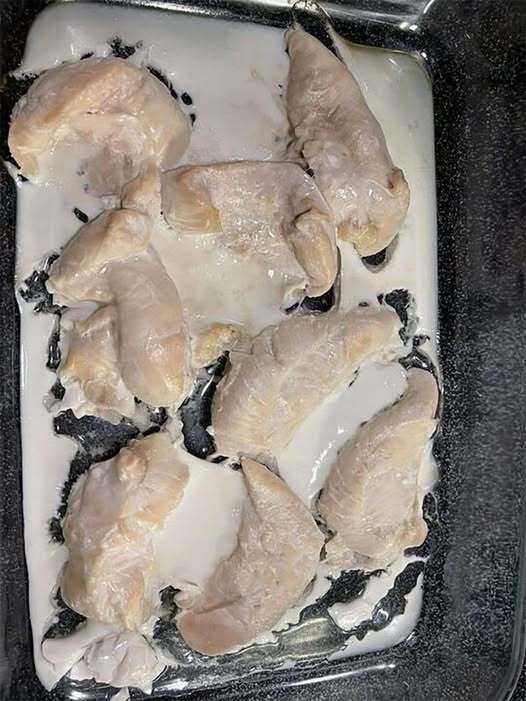If you’ve ever baked chicken and noticed a strange white, rubbery substance oozing out, you’re not alone. Many home cooks have seen this happen, especially with store-bought chicken, and wondered what it actually is.
The Truth Behind the White Substance
That white stuff isn’t fat. It’s actually a combination of protein and water. When chicken is exposed to high heat in the oven, some of the proteins—especially albumin—are forced out of the muscle fibers. They coagulate (clump together) and appear as a whitish, sometimes rubbery-looking substance on the surface of the meat.
Why It Happens
- Moisture Content – Store-bought chicken, even organic varieties, can retain extra water due to processing. When heated, this water pushes proteins out.
- High Heat Cooking – Roasting or baking at high temperatures makes the proteins coagulate faster, creating a visible white residue.
- Lean Cuts of Meat – Chicken breast, being very lean, is more prone to showing this effect than darker cuts like thighs.
Is It Safe to Eat?
Yes—it’s completely harmless and natural. The chicken is still safe, and the white substance doesn’t affect its nutritional value. It may look unappetizing, but it’s just protein.
How to Minimize It
- Cook at lower temperatures and avoid blasting the chicken with high heat at the start.
- Brine the chicken before cooking to help retain moisture more evenly.
- Don’t overcook—this makes the proteins tighten and squeeze out more liquid.
Bottom line: The white stuff is simply protein released during cooking—not fat, not chemicals, and not a sign that your chicken is bad.
